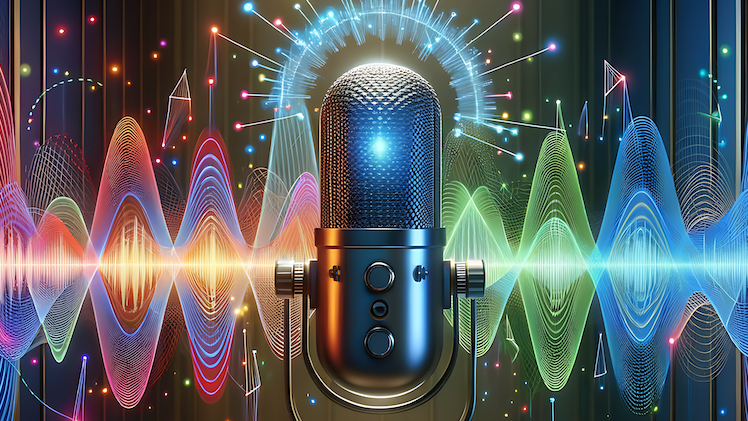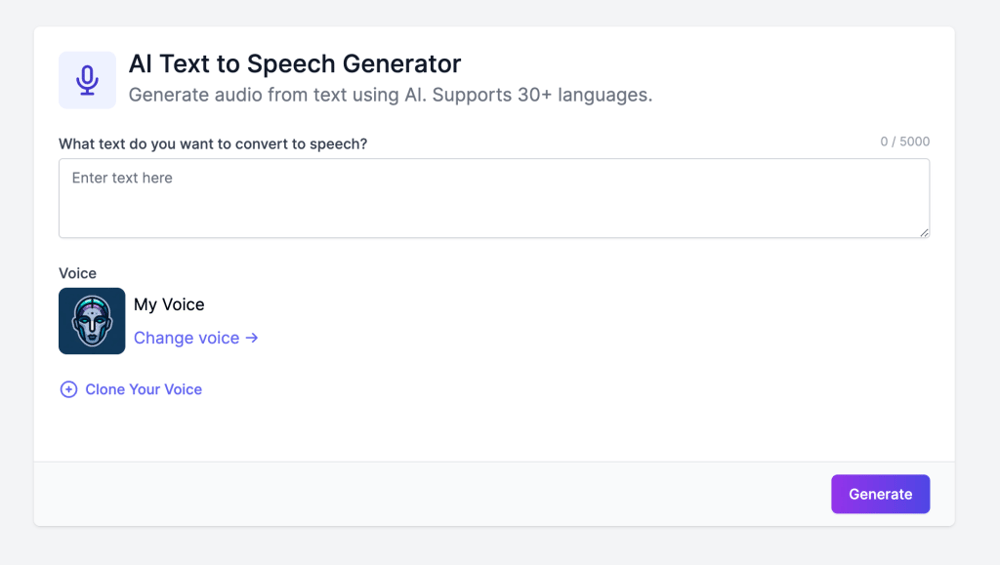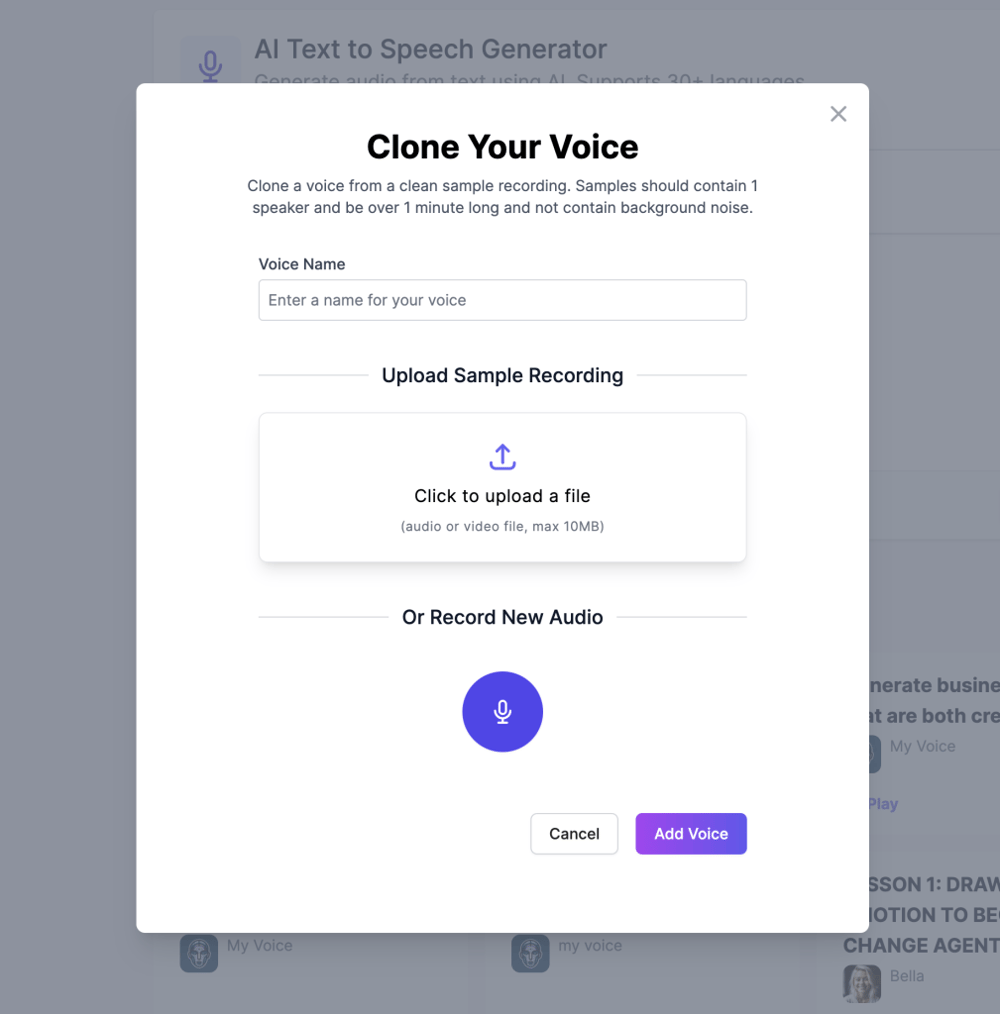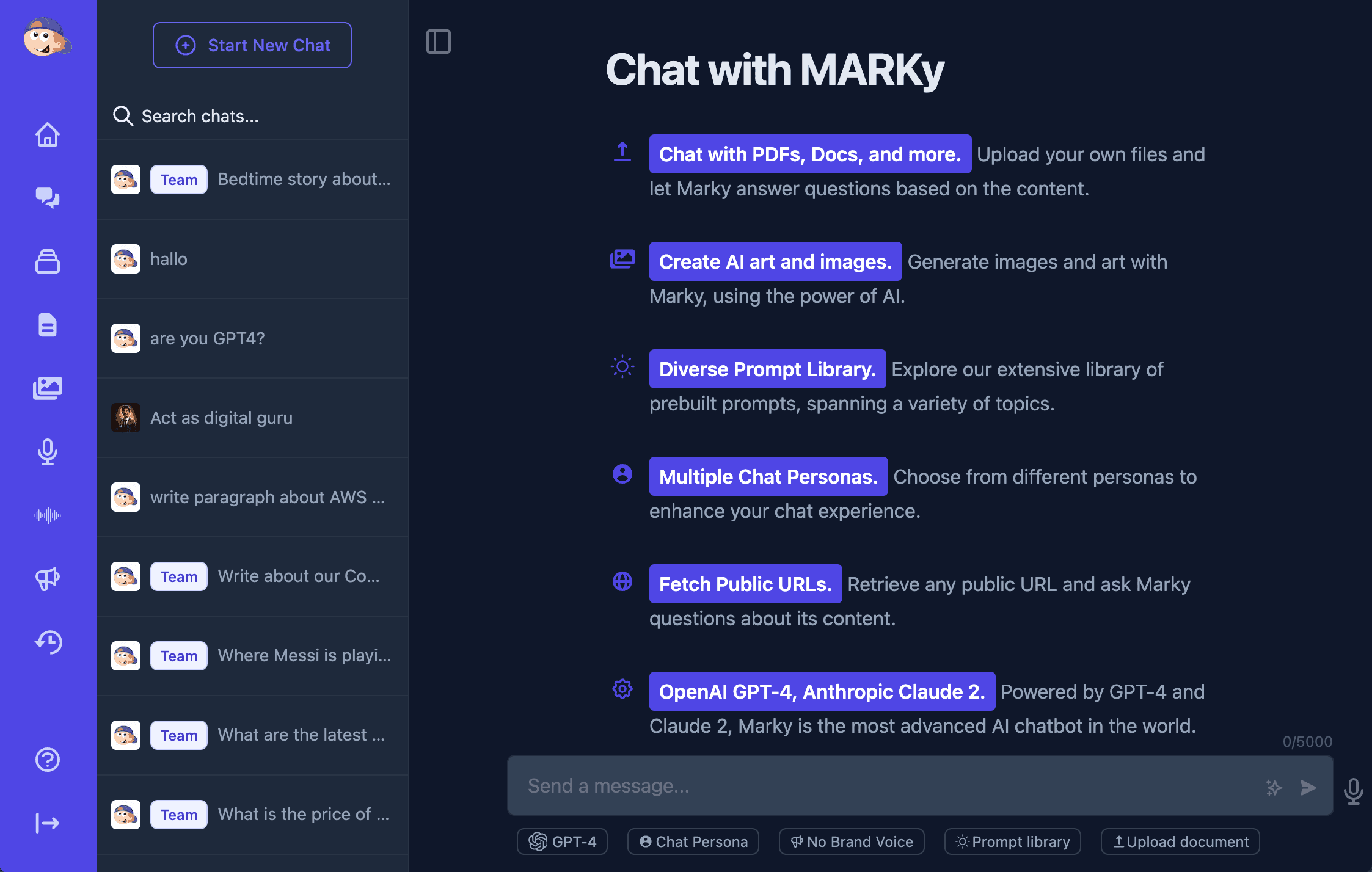Have you ever wished to have a clone of yourself, someone who can speak for you with your own voice? Well, now with the power of AI, that is possible! Introducing AI voice cloning, a revolutionary technology that allows you to replicate your voice and generate audio in your own unique tone. Imagine the endless possibilities of having the ability to have your digital voice clone speak for you – from audiobook narrations to voiceovers for videos, the applications are endless. In this tutorial, we will walk you through the process of cloning your own voice using AI, so get ready to bring your voice to life in a whole new way!

What is AI Voice Cloning?
Understanding the Basics
Before we dive into the details of AI voice cloning, let’s first understand the basics of this technology. Simply put, AI voice cloning is the process of replicating a person’s voice using artificial intelligence. This involves analyzing a person’s unique voice pattern and creating a digital voice clone that can then generate audio in that person’s voice. It’s almost like having a digital twin of yourself, but one that can speak for you with your own voice.
The Power of Artificial Intelligence
AI voice cloning is made possible by the power of artificial intelligence. This technology uses algorithms to analyze speech patterns and recreate them in a way that sounds natural and humanlike. With advancements in AI, the accuracy and realism of voice cloning have greatly improved, making it difficult to distinguish between the original voice and the digital clone. This incredible technology has opened up a whole new realm of possibilities, giving individuals the ability to truly bring their voice to life in a whole new way.
The Applications of AI Voice Cloning
The applications of AI voice cloning are vast and varied. From creating audiobook narrations in your own voice to having your voice clone speak for you in videos or presentations, the possibilities are endless. This technology also has the potential to assist individuals with speech disabilities, as their digital voice clone can speak for them in their own unique voice. Additionally, businesses can benefit from AI voice cloning by using it for automated customer service or creating voiceovers in multiple languages with the same voice. As AI voice cloning continues to evolve, we can expect to see even more innovative uses and applications in the future.
Benefits of AI Voice Cloning
- Personalization: Having a digital voice clone allows you to have a personalized voice that represents you in various forms of media. It adds a unique touch to your content and creates a more engaging experience for your audience.
- Time-saving: With AI voice cloning, you no longer have to spend hours recording audio or hiring voice actors. You can easily generate audio in your own voice within minutes, saving you time and effort.
- Accessibility: For individuals who have difficulty speaking or have lost their voice due to medical conditions, AI voice cloning provides them with a way to continue communicating in their own voice. It promotes inclusivity and accessibility for all.
- Versatility: Your digital voice clone can be used for a variety of purposes, from creating audiobooks and podcasts to voiceovers for videos. This versatility allows you to use your voice in different mediums, expanding your reach and impact.
- Consistency: By cloning your voice, you can ensure consistency in your audio content. This is especially useful for businesses and brands that want to maintain a consistent tone and voice across their marketing materials.
Overall, AI voice cloning offers numerous benefits and opens up a whole new world of possibilities for individuals and businesses alike. It not only saves time and effort but also adds a personalized touch to your content and promotes accessibility and inclusivity. With this technology, you can bring your voice to life in a whole new way and leave a lasting impression on your audience. Stay tuned for our step-by-step tutorial on how to clone your own voice using AI.
How Does AI Voice Cloning Work?

AI voice cloning is a complex process that involves the use of sophisticated algorithms and deep learning techniques. Here are the key steps involved in creating your digital voice clone:
- Voice Data Collection: The first step in AI voice cloning is collecting a large sample of your voice data. This typically involves recording yourself speaking for at least one minute, without any background noise or interruptions. The more diverse and natural your voice data is, the better the quality of your digital voice clone will be.
- Preprocessing: Once the voice data is collected, it goes through a preprocessing stage, where it is cleaned and filtered to remove any unwanted elements. This ensures that the AI model has access to only relevant and high-quality voice data for analysis.
- Voice Analysis: The AI model then analyzes the voice data to identify unique voice patterns and characteristics. This involves breaking down the voice data into smaller units and extracting features that make your voice distinct, such as pitch, tone, and intonation.
- Training the AI Model: The analysis of voice patterns is used to train the AI model, which is a deep learning network that can learn and replicate your voice. The more diverse and accurate the training data is, the more realistic and natural your digital voice clone will be.
- Replication and Synthesis: Once the AI model is trained, it can replicate your voice and generate audio using text-to-speech technology. This involves converting written text into spoken words, using the unique voice patterns learned by the AI model.
In conclusion, AI voice cloning is a complex and fascinating process that allows you to replicate your voice with stunning accuracy. With the advancements in AI technology, the possibilities for using digital voice clones are endless. Now that you have an understanding of how AI voice cloning works, let’s dive into the step-by-step tutorial on how to clone your own voice using a text-to-speech generator. Get ready to bring your voice to life like never before!
Step-by-Step Tutorial: How to Clone Your Own Voice
Ready to clone your own voice with AI? Follow these simple steps and you’ll have your digital voice clone in no time!
First, you’ll need to choose a reliable and user-friendly AI text-to-speech generator. Easy-Peasy.AI is a great option, with support for over 30 languages and a simple interface. Once you have created the account, go to AI Text to Speech Generator, then click on “Clone your voice” to begin the process.

Next, you’ll need to upload or record a sample recording of your voice. It’s important to note that the sample should only contain one speaker and be at least 1 minute long. Also, make sure there is no background noise in the recording as it can affect the accuracy of the voice cloning.
Once you have your sample recording ready, our AI will analyze your unique voice pattern and replicate it. This is the magic of AI voice cloning – the ability to capture individual nuances and characteristics of your voice. After the analysis is complete, you’ll have your very own digital voice clone, ready to generate audio in your own voice.
Choosing a Text-to-Speech Generator
Now that you have a better understanding of AI voice cloning and the potential it holds, the next step is to choose a text-to-speech generator that will bring your digital voice clone to life. With a quick Google search, you will find several options available, but it’s important to choose the right one for your needs.
Factors to Consider
Before making a decision, there are a few factors you should consider when choosing a text-to-speech generator. Firstly, make sure that the generator supports the language you want your digital voice clone to speak in. Some generators have a limited number of languages available, while others have a wider range of options. Additionally, consider the cost and any subscription fees associated with the generator, as well as the user interface and ease of use.
Quality and Naturalness
The most important factor to consider when choosing a text-to-speech generator is the quality and naturalness of the audio it produces. You want your digital voice clone to sound as realistic as possible, so it’s important to choose a generator that utilizes advanced AI algorithms and has a large database of voice recordings to create a more natural-sounding voice.
Customization Options
Another important aspect to consider is the customization options available. Some text-to-speech generators allow you to adjust the pitch, speed, and tone of your digital voice clone, giving you more control over the final audio output. This is especially useful if you want your digital voice clone to sound more expressive or match a specific tone.
User Reviews and Recommendations
Lastly, before committing to a text-to-speech generator, it’s always a good idea to read user reviews and recommendations. This can give you a better understanding of the user experience and the quality of the audio generated. Look for reviews from individuals who have used the generator for voice cloning specifically, as their insights will be most relevant to your needs.
In conclusion, choosing the right text-to-speech generator for your AI voice cloning needs is crucial for creating a high-quality and natural-sounding digital voice clone. Consider factors such as language support, cost, and customization options, and be sure to read user reviews and recommendations to make an informed decision. With the right tool, you can bring your voice to life in a whole new way and explore the endless possibilities of AI voice cloning.
Uploading or Recording a Sample Recording
Now that you have chosen a reliable AI text-to-speech generator, it’s time to provide it with a sample recording of your voice. This is a crucial step in the voice cloning process, as it allows the AI to analyze your unique voice pattern and replicate it accurately. Here’s how you can upload or record a sample recording for your digital voice clone:
- If you already have a sample recording of your voice, simply upload it to the AI text-to-speech generator.
- If you don’t have a sample recording, you can directly record new audio using a microphone or your device’s built-in microphone.
- Make sure that the sample recording only contains one speaker – yourself. Multiple speakers or background noise can affect the accuracy of the voice cloning process.
- The sample recording should also be at least 1 minute in length to provide enough data for the AI to analyze.
- The longer the sample recording, the more accurate your digital voice clone will be.
Once you have uploaded or recorded your sample recording, the AI text-to-speech generator will begin analyzing it and extracting your unique voice pattern. This process may take a few minutes, depending on the length of your recording. So, sit back and let the AI do its magic! In the next step, you will be able to generate audio in your own voice using the cloned voice model.
With your sample recording successfully uploaded or recorded, the AI will now use its advanced algorithms to analyze your voice and create a digital voice clone. This process involves breaking down your voice into smaller units, such as phonemes and prosody, and mapping them onto the AI’s voice model. This allows the AI to replicate your unique tone, pitch, and intonation accurately. The more data it has from your sample recording, the better it will be able to capture your voice’s nuances. Once the analysis is complete, you can start generating audio in your digital voice clone with just a few clicks. How cool is that?
Analyzing Your Voice Pattern
After uploading or recording your sample recording, the AI will then analyze your unique voice pattern. This is a crucial step in the voice cloning process as it allows the AI to understand the nuances of your voice, such as tone, pitch, and pronunciation. The more accurate the analysis, the more realistic your digital voice clone will sound.
The AI uses advanced algorithms and machine learning techniques to analyze your voice pattern. This involves breaking down your voice into smaller units, such as phonemes and intonations. The AI then compares these units to its database of pre-recorded voices and creates a digital representation of your voice. This process may take a few minutes, depending on the complexity of your voice.
To ensure the best possible voice clone, it is important to provide a high-quality sample recording. The recording should contain only one speaker (yourself) and be at least 1 minute long. It should also be free of any background noise or interruptions. This will help the AI accurately analyze your voice and create a more realistic digital clone.
Once the analysis is complete, the AI will present you with a preview of your digital voice clone. You can listen to the generated audio and make any necessary adjustments. If you are not satisfied with the result, you can repeat the process with a different sample recording. It is important to note that the more you use the AI, the better it will become at replicating your voice, so don’t be afraid to experiment.
In conclusion, analyzing your voice pattern is a vital step in the AI voice cloning process. It allows the AI to create a digital representation of your unique voice, giving you the ability to generate audio in your own voice. With the advancements in AI technology, the possibilities for voice cloning are endless. So why not give it a try and see how your voice can come to life in a whole new way?
Generating Audio in Your Own Voice
Now that you have uploaded or recorded a sample of your voice and our AI has analyzed your unique voice pattern, it’s time to generate audio in your own voice. This is where the magic happens! Using our text-to-speech generator, you can enter any text and our AI will use your digital voice clone to generate the audio. This means you can have your digital voice clone say anything you want, with the same tone and inflection as your own voice.
But before you start generating audio, there are a few things to keep in mind. Make sure your sample recording only contains one speaker and is at least one minute long. This ensures that our AI has enough data to accurately clone your voice. Also, try to avoid background noise in your sample recording, as this can interfere with the analysis process. Once you have a suitable sample recording, you can start generating audio in your own voice.
To generate audio in your own voice, simply type or paste your desired text into our text-to-speech generator. You can choose from over 30 languages, making it easy to generate audio in your own voice for a variety of purposes. Whether you need a voiceover for a video, narration for an audiobook, or even just want to hear your own voice saying something silly, our AI can make it happen. And the best part? Your digital voice clone will sound just like you, giving a personal touch to any audio project.
With the ability to clone your own voice using AI, the possibilities are endless. You can now have your digital voice clone speak for you in any language, any time, and in any tone you desire. This opens up a whole new world of opportunities, from personalized virtual assistants to improved accessibility for those with speech impairments. We can’t wait to see what you will create with your own digital voice clone. So what are you waiting for? Give it a try and see for yourself the power of AI voice cloning.
Conclusion and Future Possibilities
Congratulations, you have successfully cloned your own voice using AI technology! Now, you can bring your voice to life in ways you never thought possible. From creating audiobooks to personalizing voice assistants, the possibilities are endless. But the potential of AI voice cloning doesn’t stop here. This technology is constantly evolving and improving, opening doors for even more exciting future possibilities. Who knows, maybe one day you’ll be able to have conversations with your own voice clone or use it to communicate with loved ones who have passed away. The potential for this technology is truly mind-blowing and we can’t wait to see where it goes. So go ahead and experiment with your AI voice clone, and let your voice continue to make an impact in the digital world. The future of AI voice cloning is bright, and you’re a part of it.




